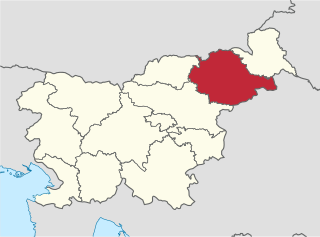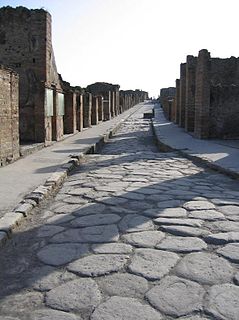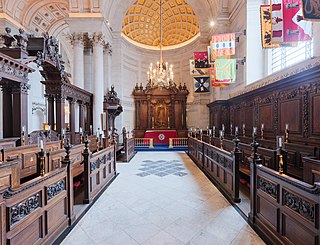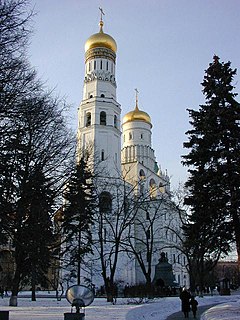
Šmarje pri Jelšah is a town and a municipality in eastern Slovenia. The area was part of the traditional region of Styria. The municipality is now included in the Savinja Statistical Region. The development of the settlement is associated with a medieval mansion known as Jelšingrad on a slight hill northwest of the town.

Leskovec pri Krškem is a settlement on the right bank of the Sava River in the Municipality of Krško in eastern Slovenia. The area was traditionally part of Lower Carniola. It is now included with the rest of the municipality in the Lower Sava Statistical Region. It includes the hamlets of Grad, Beli Breg, Veliki Marof, and Žadovinka. Older sources also mention the appertaining hamlet of Bajer.

Drenovec pri Leskovcu is a small settlement west of Leskovec pri Krškem in the Municipality of Krško in eastern Slovenia. The area was traditionally part of Lower Carniola. It is now included with the rest of the municipality in the Lower Sava Statistical Region.

Dunaj is a small settlement in the hills above the right bank of the Sava River in the Municipality of Krško in eastern Slovenia. The area was traditionally part of Lower Carniola. It is now included with the rest of the municipality in the Lower Sava Statistical Region.

Straža pri Raki is a settlement east of Raka in the Municipality of Krško in eastern Slovenia. The area was traditionally part of Lower Carniola. It is now included with the rest of the municipality in the Lower Sava Statistical Region.

Kebelj is a village in the Municipality of Slovenska Bistrica in northeastern Slovenia. It lies in the Pohorje Hills, north of Oplotnica. The area is part of the traditional region of Styria. It is now included with the rest of the municipality in the Drava Statistical Region.

Kot na Pohorju is a dispersed settlement in the Municipality of Slovenska Bistrica in northeastern Slovenia. It lies in the Pohorje Hills north of Oplotnica. The area is part of the traditional region of Styria. It is now included with the rest of the municipality in the Drava Statistical Region.

Podvin pri Polzeli is a settlement on the left bank of the Savinja River in the Municipality of Polzela in Slovenia. The area is part of the traditional region of Styria. The municipality is now included in the Savinja Statistical Region.

Brezje pri Oplotnici is a settlement in the Municipality of Oplotnica in eastern Slovenia. It lies in the hills between Oplotnica and Zreče. The area is part of the traditional region of Styria. The municipality is now included in the Drava Statistical Region.

Dobriška Vas is a small village south of Oplotnica in eastern Slovenia. The area is part of the traditional region of Styria. The Municipality of Oplotnica is now included in the Drava Statistical Region.

Čadram is a settlement in the municipality of Oplotnica in eastern Slovenia. It lies immediately east of Oplotnica itself. The area is part of the traditional region of Styria. The municipality is now included in the Drava Statistical Region.

Koritno is a settlement in the Municipality of Oplotnica in eastern Slovenia. It is dispersed on the southern slopes of the Pohorje range to the north of Oplotnica. The area is part of the traditional region of Styria. The municipality is now included in the Drava Statistical Region.

Malahorna is a village in the Municipality of Oplotnica in eastern Slovenia. The area is part of the traditional region of Styria. The municipality is now included in the Drava Statistical Region.

Pobrež is a settlement in the Municipality of Oplotnica in eastern Slovenia. It lies on the flatlands south of Oplotnica. Traditionally the entire area was part of the region of Styria. It is now included in the Drava Statistical Region.
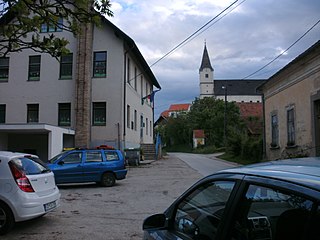
Prihova is a settlement in the Municipality of Oplotnica in northeastern Slovenia. The area is part of the traditional region of Styria. The municipality is now included in the Drava Statistical Region.

Raskovec is a small settlement in the Municipality of Oplotnica in eastern Slovenia. It lies on Čadram Creek southeast of Oplotnica. The area is part of the traditional region of Styria. The municipality is now included in the Drava Statistical Region.

Ugovec is a settlement in the Municipality of Oplotnica in eastern Slovenia. The area is part of the traditional region of Styria. The municipality is now included in the Drava Statistical Region.

Lemberg pri Šmarju is a settlement in the Municipality of Šmarje pri Jelšah in eastern Slovenia. It lies in the hills northeast of Šmarje. The area was traditionally part of Styria. The municipality is now included in the Savinja Statistical Region.

Planina pri Sevnici is a village in the Municipality of Šentjur in eastern Slovenia. The area is part of the historical region of Styria. The municipality is now included in the Savinja Statistical Region.


